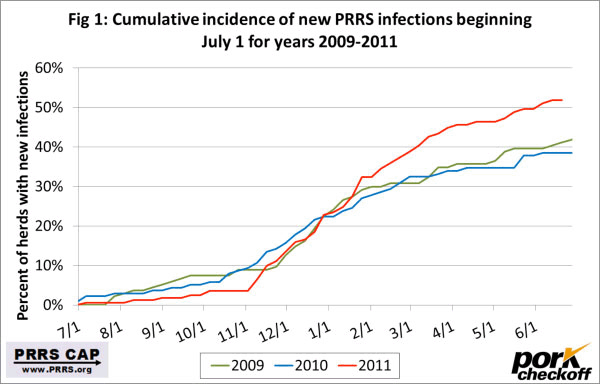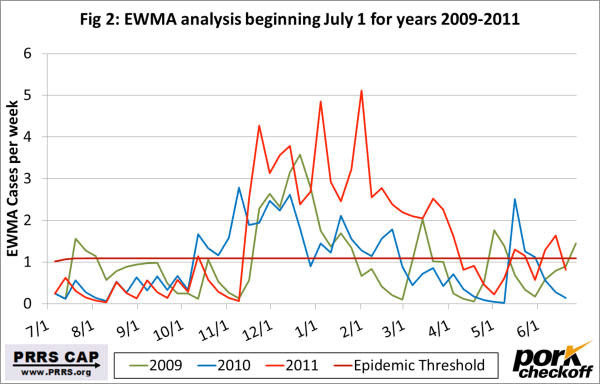Porcine reproductive and respiratory syndrome (PRRS) virus continues to devastate the U.S. swine industry and was recently reported to cause $644 million in losses annually. This situation exists despite the best efforts of the scientific community to advance the knowledge of vaccines and immunology, epidemiology and ecology, host genetics, regional control projects and education. It seems clear that there is still much to be learned about the disease and how best to control it.
July 2, 2012

Porcine reproductive and respiratory syndrome (PRRS) virus continues to devastate the U.S. swine industry and was recently reported to cause $644 million in losses annually. This situation exists despite the best efforts of the scientific community to advance the knowledge of vaccines and immunology, epidemiology and ecology, host genetics, regional control projects and education. It seems clear that there is still much to be learned about the disease and how best to control it.
We are seeking to better understand the incidence or frequency of new herd infections of PRRS virus in the U.S. swine industry. We designed a project to gain this understanding and, in doing so, veterinarians providing services to approximately 270 farms with 820,000 sows in a dozen states have agreed to participate.
Each week, the PRRS status of each farm is reported. While this sample is not representative of all sow herds in the United States, the results are strikingly similar among participating systems and across the last three years of data.
Using July 1 as the start of each year’s observation period, approximately 40-50% of the participating sow farms have become infected annually (Figure 1). During the last three years, new infections increased gradually in September, dramatically increased at the end of October, then plateaued in late February. As of the end of June 2012, 52% of the herds have reported a new infection.

Using a statistical analysis known as “exponentially weighted moving average” (EWMA), provides a way of determining when the weekly number of herds with new infections crosses an epidemic threshold – an indication that a new “PRRS season” has begun. Using these data, we are able to confirm that the primary PRRS season starts in October/November and ends in March/April. Interestingly, these data suggest a second mini-epidemic of PRRS occurs in late April/May that lasts only a few weeks (Figure 2).

To reiterate, the information contained in the PRRS projects is comprised of a sample of herds that voluntarily share their data. The results do not necessarily reflect what is happening in the U.S. swine industry as a whole. These observations, however, offer the first quantitative insight into the rate of new PRRS virus infections that are occurring in a large segment of the industry. As the project continues to grow, it will add to our understanding of the behavior of the virus and potentially lead to better control measures in the field.
We appreciate the willingness of the participating farms and veterinarians to share their data and acknowledge funding support from the National Pork Board and the USDA PRRS Coordinated Agricultural Project.
You May Also Like


